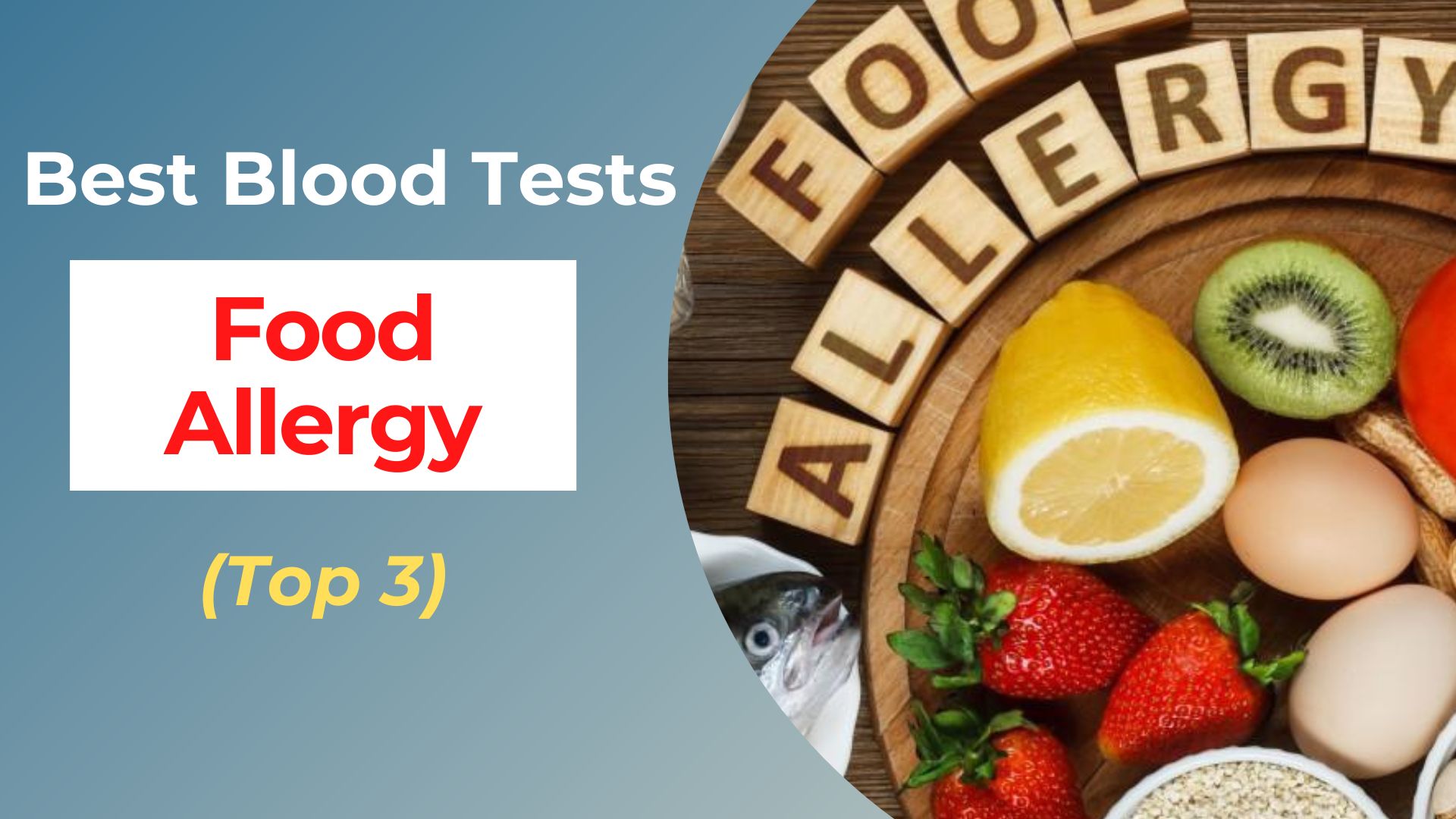Food allergies are on the rise, and more people are looking for blood tests to determine whether they have allergies.
There are a number of blood tests available on the market, but which one is best?
In this article, we will review three of the best blood tests for food allergy diagnosis.
Please know a great idea is to always consult with your doctor for official medical advice first. If you have insurance, they may assist you with the expenses and hopefully without too much paperwork.
But if you’re looking for a simple method to get a food allergy testing without going through the process of making an appointment with your doctor months down the road, then keep reading.
We may receive a small commission if you order using some, but not all, of the links below. This helps keep the Eating Enlightenment CBT Food Journal App free for it’s hundreds of users.
If you want more info on supplements – including risks and general FDA guidelines – please see our “Supplements and Vitamins – Ultimate Beginner’s Guide”.
Criteria For Best Food Allergy Tests
Test for Common Foods That Cause Allergies:
Peanuts and shellfish are the most obvious food allergies, but there are many more. The more foods a test measures, the more information you’ll get..
Please note: the general reader often means the same thing when they talk about ‘intolerances’ and ‘allergies’ (for more info about the differences between allergies and intolerances see discussion further below). We include one test for intolerances.
Certified Labs:
We selected blood test vendors that had been certified by the Clinical Laboratory Improvement Amendments (CLIA). We also considered their third-party assessments and Better Business Bureau ratings for each service.
Convenience:
We searched for websites that provide thorough explanations of tests, offer results in an easy-to-understand format, enable you to track health developments as you order additional tests, and deliver rapid outcomes.
Best For Intolerances: Intolerance Lab

- Price = $55 (€49)
- Location: At Home
- # of Reviews = 1608
- Average Rating = 4.4/5
- Better Business Bureau Rating = N/A
Intolerance Lab has two main advantages: price and at home testing using your hair.
In terms of price, you’re not going to find a lower price on the market.
Intolerance Lab’s test is hair-based. Instead of going to a lab and getting your blood drawn, you can pluck a few hairs from at home.
Intolerance Lab has a database of 700+ foods they will test your hair against.
Please note: As noted above, allergies and food intolerances are different. This is an intolerance test, NOT a food allergy test.
If you have a food allergy – for example, if you eat peanuts and hyperventilate – then see other tests below. For more info about the differences between allergies and intolerances see discussion below.
If you’re like many people who use allergies and intolerances interchangeably, then Intolerance Lab is a great first step in our opinion.
Best Overall: Health Labs

- Price = $160
- # of Labs in US = 4500
- # of Reviews = 15,500
- Average Rating = 96%
- Better Business Bureau Rating = A+
The Better Business Bureau has given Health Labs an A+ grade after eleven years.
Health Labs has over 4500 authorized testing facilities in its database, so you’re likely to find one nearby.
The “Basic Food Allergy” test panel from Health Labs can identify whether you are allergic to 15 of the most frequent food allergies.
You should know this test includes the “Big 8,” which are 8 specific foods that alone account for 90% of the food allergies in the US.
The following 15 foods are tested in this panel (the Big 8) are marked with an *:
- Almonds*
- Cashews
- Codfish
- Cow’s Milk*
- Eggs*
- Hazelnuts (Filberts)
- Peanuts*
- Salmon*
- Scallops*
- Sesame Seeds
- Shrimp
- Soybeans*
- Tuna
- Walnuts
- Wheat*
Best Alternative: Walk-In Lab

- Price = $148
- # of Labs in US = 3700
- # of Reviews = 16,605
- Average Rating = 4.8/5
- Better Business Bureau Rating = A
After 12 years of accreditation, the Walk-In Lab received an A grade from the Better Business Bureau (BBB).
Walk-In Lab’s “Food Allergy Panel” tests for a variety of common food allergens:
- Milk
- Wheat
- Corn
- Peanut
- Soybean
- Egg, Whole
- Chocolate
- Pork
- Beef
- Seafoods (mussel, fish, salmon, shrimp, tuna)
Best Price: Personalabs

- Price = $144-$154
- # of Labs in US = 2300
- # of Reviews = 1557
- Average Rating = 4.8/5
- BBB Rating = N/A
Personalabs offers the best price for a strict food allergy test.
Their “Food Basic Allergen Profile” checks for allergic responses to six of the most frequently encountered food items:
- codfish
- egg whites
- peanuts
- soybean
- wheat
- cow’s milk
Why Do I Need Food Allergy Testing?
The most dangerous health problem related to food allergies is anaphylactic reactions or shock.
Anaphylactic shock is where the body goes into shock after being exposed to the allergen.
Anaphylactic shock affects the whole person. Symptoms can include:
- difficulty breathing
- swollen throat
- dizziness
- fast heart rate
- feeling faint or lightheaded
Some of the symptoms can occur just seconds after an allergic reaction.
However, many allergy symptoms are more mild.
The skin, gastrointestinal system, cardiovascular system, and respiratory tract may all be affected by an allergic response.
The following are some of the symptoms that might show up in cases of mild allergic reactions:
- Vomiting is the most common side effect
- Stomach cramps are another frequent symptom
- Coughing repeatedly is a sign of infection, which can be a complication of a food allergy
- Itchy skin, also called dermatitis, is a very common sign that you might be having an allergic reaction to something that you ate
- Rashes, which can be either itchy or bumpy, may develop on the skin
- Watery and bloodshot eyes may occur as well
How Common Are Food Allergies?
Food allergies are quite common. According to food allergy research, they currently affect 5% of adults and 8% of children worldwide.
Whether a youngster will inherit his or her parent’s food allergy cannot be predicted.
Surprisingly, while any food might induce an allergy, only a small number of frequent foods account for the majority of allergies. Remember? The Big 8 account for about 90% of allergies in the U.S.
What’s the Difference Between Food Allergies and Food Intolerances?
Food allergies and food intolerances are both problems that can occur after eating foods.
Some people confuse the terms “food allergy” and “food intolerance. However, the two conditions are different. A food allergy is an immune system response to a specific food.
However, a food intolerance does not involve the immune system.
A food intolerance is a problem that occurs when the body cannot digest a specific food or drink – but are not fatal or that dangerous.
Food intolerances are much more common than food allergies. They affect an estimated 50% of the population.
Symptoms of food intolerances can include:
- Diarrhea
- Nausea
- Vomiting
- Stomach cramps
- Headache
- Fatigue
Food allergies, on the other hand, are much less common. They affect about only one in every 50 people.
The symptoms of food allergies can be very serious and include:
- Anaphylactic shock
- Hives
- Itching
- Swelling of the lips, face, or throat
- Wheezing
- Difficulty breathing
- Coughing
Is There Anything Else I Need to Know About Food Allergy Testing?
It can be difficult to avoid foods that cause allergies. However, there are lifestyle and home remedies that are common sense.
The most effective ways for preventing allergies are avoiding foods that cause the symptoms.
- Always check your food labels for substances that can be allergens.
- Read labels to avoid common food allergens that might affect you personally, such as meat, poultry, shellfish, soy and wheat.
- Please know in restaurants or social groups, there are always chances that you could be served something that you are allergic to.
- If you have had a severe allergic reaction in the past, be sure to carry appropriate medical materials like an epi-pen on your body or purse before going out.
There are also other food allergy tests like the skin prick test or an oral food challenge if you want an alternative food allergy diagnosis. .
The skin prick test involves injecting microscopic amounts of food underneath the skin to see if the skin reacts, usually with a rash.
The oral food challenge is where you ingest an amount of food under controlled circumstances to determine if your body reacts.
Sometimes you also just put the food underneath your lower lip to see if you react.
Treatment
The most effective approach to avoid allergic reactions to a food is to stop eating anything that produces symptoms or has an impact.
However, even if you attempt to avoid them, you may come into contact with foods that can cause reactions. An antihistamine might help with mild or severe allergies such as those caused by food allergy.
Antihistamines, on the other hand, are ineffective in treating severe allergies. A life-threatening allergic reaction is likely to necessitate injections using a syringe or to the hospital. The vast majority of allergy patients possess autoinjectors for EPI-p administration.
Third Party Resources:
- Better Business Bureau for Ulta Wellness
- Better Business Bureau for Walk-In Labs
- Walkin Lab verified reviews
- Better Business Bureau for Health Labs
- Intolerance Lab Independent Reviews
Conclusion
Food allergies are quite common, affecting 5% of adults and 8% of children worldwide.
While any food might induce an allergy, only a small number of frequent foods account for the majority of allergies.
If you have had a severe allergic reaction in the past, be sure to carry appropriate medical materials like an epi-pen on your body or purse before going out.
Treatment for food allergies typically involves avoiding foods that cause symptoms and taking antihistamines.
Of course taking a blood test to confirm a food allergy is a great idea too.
Read here if you want to learn more about getting a blood test for vitamin deficiencies!


